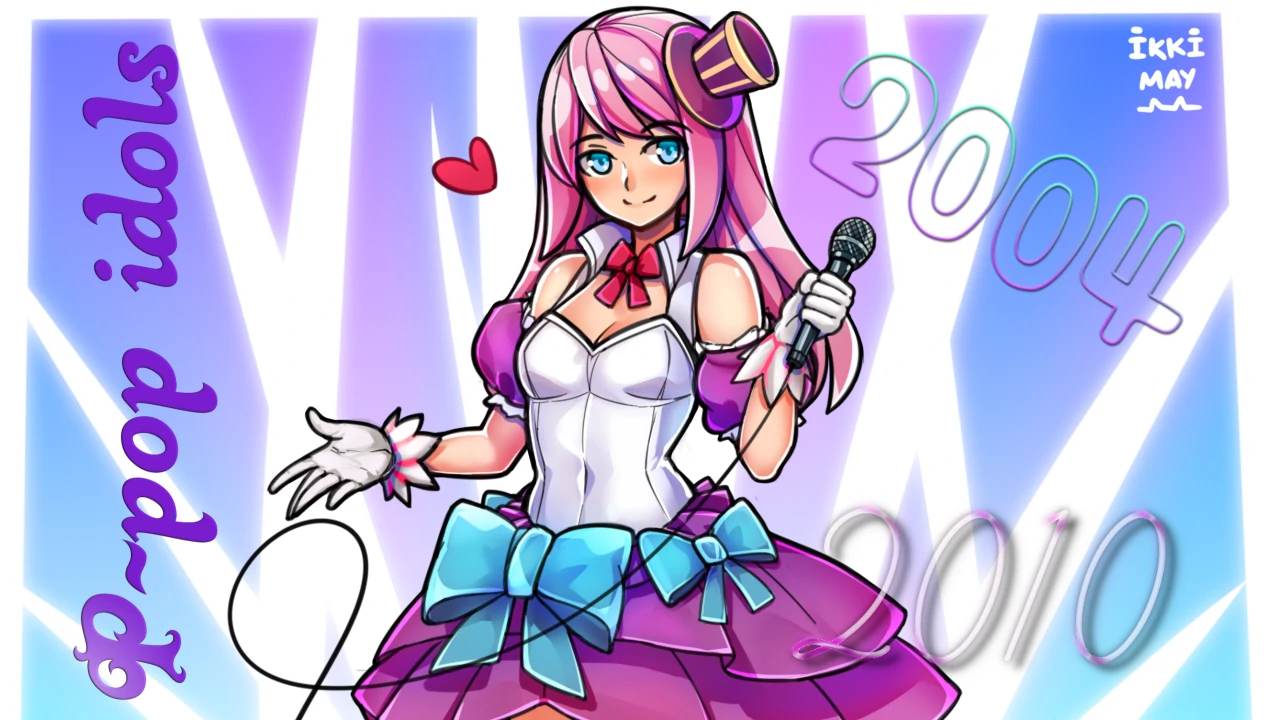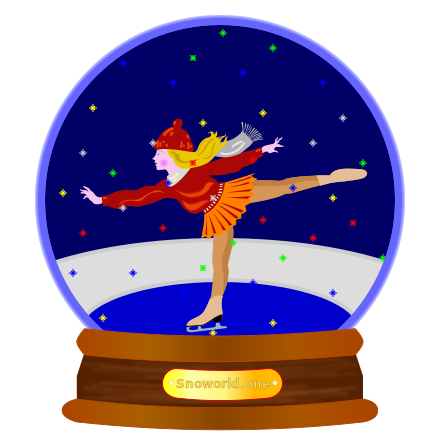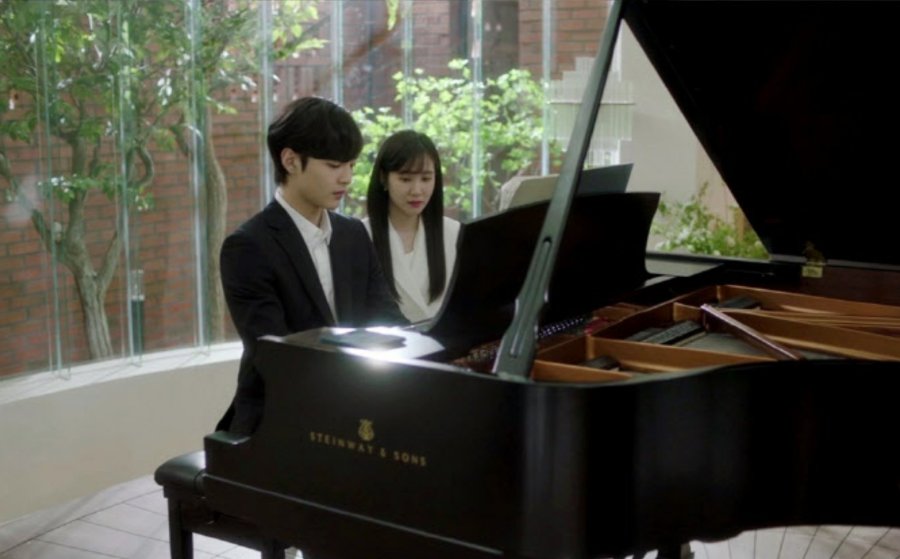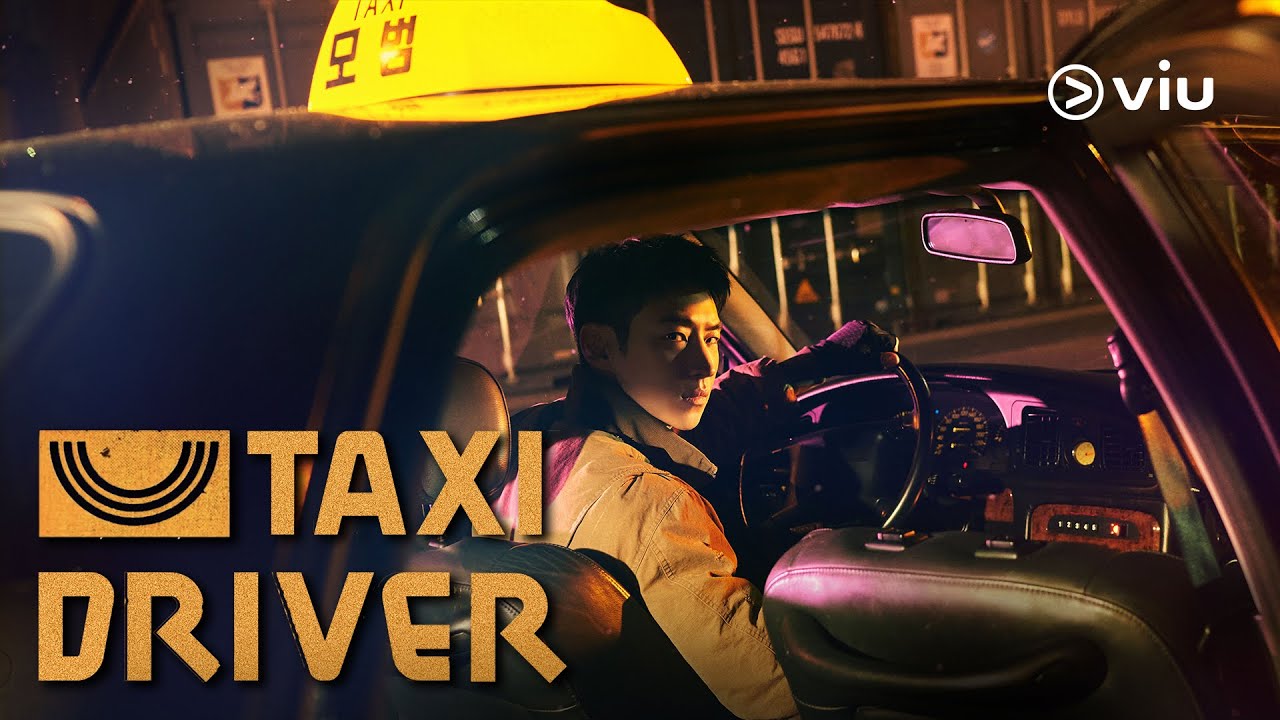Did you like it? Do share this post, leave a comment below, and send me a gift! (opens in a new tab/window)
P-pop idols, when did it all start?
Pinning down the date the P-pop IDOL industry started.

The trillion-peso questions are: when was the beginning of the P-pop idol industry, and who was the first P-pop idol?
To know when the P-pop idol industry started it is important to first define what an idol is.
What is an idol?
Music idols are generally 12–25 year old entertainers marketed for their visual aesthetics and personality. They are given intensive training in singing and dancing usually for twelve to twenty-four months, sometimes longer. Idols are expected to keep a healthy relationship with their fans and to grow with them through the years.
Idols are beautiful, pure, and multitalented
1933 Japan: Matsuko Ashita (あした まつこ / 明日 待子) became the very first music idol in history. She was a theater actress with a captivating smile, unmatched beauty and immense cuteness, a good dancer and singer, a model, and a natural entertainer.
Idols are an ideal person one wants to be and as such are expected to be perfect in many ways. They should be beautiful specimens, have an aura of innocence and purity, be cute or cool, and demonstrate various talents. They are more than entertainers, they represent the dreams of every person.
Idols undergo a trainee program
1962 Japan: Johnny Kitagawa (ジャニー喜多川) developed the very first idol trainee system. Through it his company, Johnny & Associates (株式会社ジャニーズ事務所), produced many of the first idol groups in the world.
1996 South Korea: SM Entertainment (SM 엔터테인먼트) founder, Lee Soo Man (이수만), brought the Japanese idol trainee system in Korea. Through Korea’s cultural technology, an adaptation of the Japanese idol trainee system, the K-pop idol industry achieved global status in a short amount of time.
An idol trainee program is an intensive training in singing while dancing an incredibly synchronized choreography. It sometimes include training in social skills, how to act and answer in interviews and variety shows, learning new languages, and specialized skills. It also serves as a chance for the idol to master their craft.
Talent search competitions are also a common method in discovering those with hidden talents and have the potential to become huge idols. Idols discovered through a talent search competition usually debut early all the while going through the training system. They already have fans they can share their growth with—from an unpolished talent to a dream idol.
ALAMAT - ‘kasmala’ (Official M/V)
Official music video by Alamat performing ‘kasmala’
The work shown above is Copyrighted to ALAMAT.
Defining an idol
Idols are not idols because of their clothing style, color choices, music genre, dance routines, or because they released music videos and did fan signing events—these are marketing strategies. Idols are idols because of who they are, the image they portray, and how they represent their culture. A talent agency can have all the best concepts, catchy songs, and the best dance choreographies, but if a potential idol have an image which is not within the dreams of their target market, there is no idol.
With these in mind, an idol—solo or group—should have these characteristics:
- Appearance: beautiful and handsome
- Character:
- wholesome image
- keeps their personal lives and opinions private
- innocent and pure
- cute or cool
- approachable and friendly person
- an inspiration
- a role model
- Multitalented entertainer and performer
- a singer
- a dancer
- can act
- can host
- comedic 1
- Dance routines
- formation changes
- point choreography
- Represents the best and positive about their nation and culture, and their target market
UGG (U Go Girls) — Dati [Official Music Video]
The official music video of Dati by UGG (U Go Girls).
The work shown above is Copyrighted to Viva Records.
Idol groups
There are additional characteristics for groups to be considered an idol. These are:
- Each member have a unique character and personality
- Members usually have a role to play in the group
- leader
- center
- strong visuals and cuteness/coolness
- lead vocals
- main vocals
- sub-vocals
- lead dancer
- main dancer
- Members with specializations showcase their talents
- vocalizations
- hip hop / rapping
- breakdancing
- hosting
- acting
- Members usually have a solo or duo part in a song
This format is seen in Japanese idol groups like Morning Musume (モーニング娘 / Mōningu Musume) 2 3 and Onyanko Club (おニャン子クラブ / Onyanko Kurabu) 4; in Korean idol groups like 2NE1 (투애니원) 5 6 and Girls’ Generation (소녀시대 / So Nyeo Shi Dae (SNSD)) 7 8; and in Pinoy idol groups like Alamat (ᜀᜎᜋᜆ᜔) 9, Bini (ᜊᜒᜈᜒ) 10, MNL48 (ᜋ᜔ᜈ᜔ᜎ᜔48) 11, and UGG (ᜂᜄ᜔ᜄ᜔ / U Go Girls) 12.
What is the P-pop idol image and industry?
The P-pop idol image is not new but as an industry it is. Think of Matsuko Ashita (あした まつこ / 明日 待子), she was only considered a J-pop idol decades after the trainee system was developed and the word idol was coined. In her time she was simply called an actress, a singer, and a star.
The P-pop idol image and industry are no different. The Philippines already had a P-pop idol five years before the P-pop idol industry was established.
Who was the first P-pop idol?
The trillion-peso questions are: when did the P-pop idol industry start, and who was the first P-pop idol? With the limited information publicly available for P-pop acts, it is no wonder these questions remain unanswered. Even so, based on the established criteria mentioned earlier, it is possible to identify the first idols in P-pop history.
First solo female P-pop idol
The earliest act—that passed the established criteria of an idol—was in 2004. She is widely known as projecting a wholesome image, cute, pure, friendly, an inspiration to many, and a very good role model for teenagers. She was dubbed as the Pambansang Krung-krung (ᜉᜋ᜔ᜊᜈ᜔ᜐᜅ᜔ ᜃᜓᜇᜓᜅ᜔ᜃᜓᜇᜓᜅ᜔ / Nation’s Crazy Personality). Sandara described it as unique, cute, and crazy
13. She is none other than Sandara Park (박산다라).
Sandara Park - In or Out Official MV (Eng Sub)
The work shown above is Copyrighted to WolfAnimeGurl115.
Sandara Park (박산다라) was the first runner-up in ABS-CBN’s Star Circle Quest in 2004. She made her singing debut that same year with the release of her eponymous album which sold more than 100,000 physical copies. It was certified platinum by the Philippines Association of the Record Industry. Her single In or Out was a mega dance hit, played in major radio stations and heard in homes and parties. In an interview with Manila Bulletin, Sandara recalled how her fans sang her single with her during her promotional tour all over the Philippines. 14
While Sandara (산다라) is pure Korean, her songs were composed by Filipinos. In What is the difference between P-pop and OPM, P-pop, or Pinoy Popular music, was defined as all music composed or performed by a Filipino
. It is simply another term for the entirety of Pinoy music regardless if the music is mainstream, indie, underground, from Filipinos abroad, or was performed by a foreigner
.
Sandara (산다라) is the first P-pop idol.
First P-pop idol girl group
Pop Girls — Crazy Crazy (Official Music Video)
Official music video of Pop Girls’ first single entitled Crazy Crazy. This song is included in their self-titled debut album, released under the P-Pop label of Viva Records.
The work shown above is Copyrighted to Viva Records.
The title for the first P-pop idol girl group goes to Pop Girls, they debuted on December 13, 2009 with their song Crazy Crazy. While Pop Girls was inspired by North American and English girl groups, they passed the criteria of an Asian idol girl group.
Pop Girls started with members Jaliah and Mariam Baustria (Filipino-Lebanese twins), Shy Carlos (Filipino-Swiss), Rose Van Ginkel (Filipino-Dutch), and Nadine Lustre. They released studio albums and digital singles; and members graduated and new members joined. They had promotional tours and appeared on shows, until all the members graduated on April 12, 2017 after the release of their farewell song Prinsesa (ᜉᜒᜇᜒᜈ᜔ᜐᜒᜐ).
First P-pop idol boy group
XLR8 —You’re So Hot (Official Music Video)
Official music video of the song You’re So Hot as performed by XLR8. This is included in the group’s debut album. Released by Viva Records under the P-Pop label.
The work shown above is Copyrighted to Viva Records.
In March 17, 2010, the Philippines saw its first P-pop idol boy group in XLR8. XLR8 was an 8-member idol boy group with members Arkin del Rosario, Carlo Lazerna, identical twins Meljohn and Melmar Magno, AJ Muhlach, Kiko Ramos, Caleb Santos, and Hideaki Torio. They regularly performed in GMA 7’s variety show, Party Pilipinas. They had one studio album (certified gold), two singles and music videos, won the Most Promising Recording/Performing Group of 2011 from the GMMSF Box-Office Entertainment Awards, and three concerts under their belt, before they went their separate ways.
First P-pop idol co-ed group
P-pop co-ed groups are not new in the Philippines, there were the immensely popular co-ed groups Smokey Mountain from 1989 to 1995—whose songs can still be heard to this day—and the young teens known as Sugarpop from 2006 to 2009. Though, the title of the first P-pop idol co-ed group goes to RPM.
RPM (ᜇ᜔ᜉ᜔ᜋ᜔), or Real Pinoy Music, was a 7-member P-pop idol co-ed group that debuted on April 21, 2010. The group was made up of Pio Balbuena, Yanna Garcia, Anna Luna, Samantha Page, Chris Salcedo, Carl Trazo, and Vince Yap.
RPM — Para Sa ‘Yo (Official Music Video)
Official music video of the song Para Sa ‘Yo by RPM. This song is included in their self-titled debut album released by Viva Records.
The work shown above is Copyrighted to Viva Records.
In closing
The P-pop idol image started in 2004, however, it was not until mid December 2009 when the P-pop idol industry itself was established. Since then the country had seen debuts of P-pop idol groups one after another, firmly marking it as the beginning of the P-pop idol industry.
Bonus: The 1st generation of P-pop idols
To properly identify the P-pop idol generations, it is important to define what and how long a generation is. Jane Pilcher has this to say:
The notion of generation is widely used in the everyday world to make sense of differences between age groupings in society and to locate individual selves and other persons within historical time. We speak, for example, of ‘my generation’ and of ’the older generation’. We describe those who grew up in, say, the 1960s, as belonging to ’the sixties generation’. We speak of ‘a few generations ago’, ‘a new generation’ and of ’the generation gap’.
Mannheim’s Sociology of Generations: An Undervalued Legacy. The British Journal of Sociology, 45(3), 481–495., Jane Pilcher
As Jane Pilcher said, we describe those who grew up in, say, the 1960s, as belonging to ’the sixties generation’
. This is a good basis because it is fixed to ten calendar years. For this reason, the 1st generation of P-pop idols cover debuts from 2010–2019.
Since Pop Girls had their debut 19 days before 2010, and they were the first P-pop idol to debut since 2004, a minor exception can be made. While the 1st generation of P-pop idols is still from 2010–2019, Pop Girls are included even though they debuted a few days before the turn of the year.
Immediately after the end date of the 1st generation is the beginning of the 2nd generation of P-pop idols. This current generation of P-pop idols cover debuts from January 1, 2020 to December 31, 2029.
Bonus: The 2nd generation of P-pop idols
Think of P-pop idol generations as a person. Its first ten years were its days as a young kid. It had no idea of the world and was simply experimenting and learning from its environment. Accussations were thrown of being a copycat—exactly like how kids are. Idols have come and gone. But after going through with it all, like a young kid, the teenage years arrived.
The next ten years is a crucial period in a person’s growth. It is when a person learns the most and is easily molded. It is when a person starts to find its identity in the world, why he or she exists, their purpose in life. In the same way that the P-pop idol 2nd generation is the critical ten years of the industry.
This is an opportunity for the idols, the fans, and the nation itself, to mold the P-pop idol industry into its own Filipino brand it can be proud of. A chance to make it standout and be uniquely different from its counterparts in Japan and Korea. If the J-pop idol industry is primarily about young cute girls and handsome cool boys; and the K-pop idol industry is all about being a commercial product than being about the whole experience …
What is the identity of the P-pop idol industry? Two years into the P-pop idol 2nd generation and the first of these unique features are starting to show up, even on the marketing side. But this is a topic for another day.
It is 2022, there are less than 7 years left for Filipinos to shape and give an identity to its own P-pop idol industry. Let’s make it count!
Bonus: The Modern P-pop Generations
The P-pop idol generations should not be confused with the modern P-pop generations. This will be the topic of the next article in this series. Simply put it refers to all P-pop acts regardless if they are considered an idol or not.
Here are the generations of modern P-pop:
- 1st Generation of Modern P-pop (1990–1999)
- 2nd Generation of Modern P-pop (2000–2009)
- 3rd Generation of Modern P-pop (2010–2019)
- 4th Generation of Modern P-pop (2020–2029)
NPR: Why The Blueprint For K-Pop Actually Came From Japan ↩︎
[Morning Musume] YouTube: The Peace! ↩︎
[Onyanko Club] YouTube: Sailor Fuku o Nugasanai de (セーラー服を脱がさないで / Sērā Fuku o Nugasanai de) ↩︎
[2NE1] YouTube: I Don’t Care ↩︎
[Bini (ᜊᜒᜈᜒ)] YouTube: Born To Win ↩︎
[MNL48 (ᜋ᜔ᜈ᜔ᜎ᜔48)] YouTube: Pag-ibig Fortune Cookie ↩︎
ABS-CBN Entertainment YouTube: Where did Krung-Krung start? ↩︎
Manila Bulletin: Inspiring Return ↩︎











